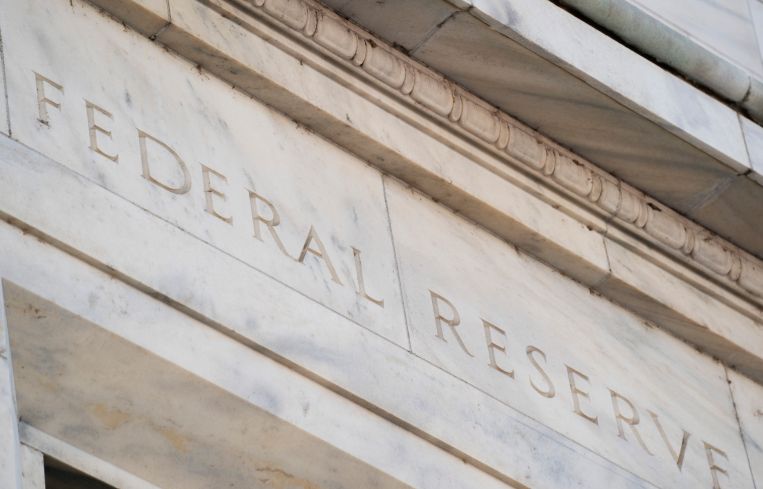Industry Groups Push for Inclusion of CMBS in Reestablished TALF Program
By Mack Burke March 24, 2020 4:42 pm
reprints
As part of Monday’s response from the U.S. Federal Reserve, the U.S. Department of the Treasury and the Federal Housing Finance Agency (FHFA) to support and provide some liquidity to the commercial mortgage space, the Term Asset-Backed Loan Facility (TALF) program from 2008 was reinstituted. But it failed to include support for the commercial mortgage-backed securities (CMBS) market, and it’s unclear why the sector was left out.
More than a dozen industry trade groups — headlined by the CRE Finance Council (CREFC), the International Council of Shopping Centers (ICSC) and the Mortgage Bankers Association (MBA), among others — co-signed a letter to government officials this morning that asked why the CMBS market was excluded from TALF 2.0 and urged them to consider its inclusion.
“The exclusion [CMBS] from today’s announcement of the TALF 2.0 program has caused significant harm to that market, and we request it be added as early as possible,” the letter read. “The CMBS market is a key element of the CRE finance ecosystem and accounts for 28 percent of all outstanding CRE debt.”
As well as financing some of the biggest loans not fit for balance sheets, the CMBS market is a key funding source for smaller-balance and middle market debt deals in many secondary and tertiary markets across the country, with conduit CMBS transactions backed by apartment buildings, hotels, retail centers and industrial and medical assets.
The sector has felt the pain of the COVID-19 outbreak over the last few weeks as billions of dollars in CMBS has been exposed to disruptions. The steep fall in oil and gas placed pressure on around $6.3 billion in CMBS loans that have exposure to energy tenants and the hospitality sector’s nosedive has squeezed conduit pools and hotel single-asset single borrower (SASB) deals.
The new TALF 2.0 that was implemented on March 23 will allow the Fed to issue asset-backed securities (ABS) backed by things like student loans, auto loans and credit card loans, according to information from the Fed’s website. The independent entity will provide non-recourse debt to holders of specific AAA-rated ABS that are backed by these consumer and small business loans. The Fed will lend up to the market value of the security, minus a haircut.
The TALF program was first created by the Fed and the Treasury Department in November 2008 to provide liquidity for households and small businesses following the financial crisis. The program gave the Fed leeway to provide said non-recourse loans of up to five years to those eligible holders of ABS. The goal was to increase demand for ABS as a financing mechanism, which would spur more issuance and help bring more debt capital to households and small businesses, thereby improving ABS market conditions.
After talk began to swirl last weekend about the impending collapse of the commercial mortgage market, CREFC sent its own letter to the Fed, the Treasury and FHFA on Monday that proposed a handful of measures to buoy the debt markets. One such proposal was to bring back TALF.
“TALF 2.0 would provide investors with non-recourse loans secured by new-issue and legacy mortgage-related securities, including but not limited to agency and private-label single-family and multifamily securities, private-label [CMBS], and specific types of high-grade credit risk, such as the GSE’s credit risk transfer securities,” CREFC’s March 23 letter reads. “A reinstatement and refinement of TALF are of the utmost importance and should be instituted as soon as possible to stave off further deterioration of these markets and further reduced liquidity to vital sectors of the U.S. economy.”
Today’s letter brought about renewed calls to expand TALF to include these CMBS requests.
The letter also requested that the current terms of TALF 2.0 be expanded to increase the five-year maximum loan term for CMBS, reduce haircuts to a range of between 5 percent and 10 percent and to extend TALF 2.0 eligibility criteria to include “super-senior AAA investment-grade rating from one or more of the nationally recognized statistical rating agencies. These senior bonds make up 70 percent of CMBS.”
Concerns from these trade groups were somewhat underscored by the idea that many CMBS investors are public pension funds behind some COVID-19 first responders and other public service professionals who are on the frontlines in the struggle against the virus’ outbreak.
“CMBS is a visible proxy for real estate loans, where banks, life companies, and other lenders have significant exposure,” today’s letter reads. “A nonfunctioning CMBS market will likely impact all commercial real estate loans.”


